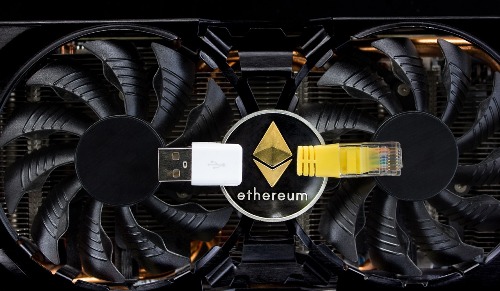All Eyes on Ethereum

Ethereum has been on a tear recently, outpacing Bitcoin as an increasing store of value.
Although Ethereum has its own token (Ether) that can be bought and sold just like Bitcoin, the primary purpose of the network is to allow third parties to write contracts on the blockchain. These are called "smart contracts" and become a permanent record of the transaction. The cost of the contract is paid in Ether.
The entire Ethereum network is a giant mass of nodes (computers) connected to one another. In fact, the entire network can be visualized as a single entity called the “Ethereum Virtual Machine” or EVM for short. All the transactions that have happened and will ever happen in this network are automatically updated and recorded in an open and distributed ledger. So what is the advantage of this? Before we explain that it is important to know what a “smart contract” is.
Smart contracts are how things get done in the Ethereum ecosystem. When someone wants to get a particular task done in Ethereum they initiate a smart contract with one or more people. Smart contracts are a series of instructions, written using the programming language “solidity”, which work on the basis of the IFTTT logic aka the IF-THIS-THEN-THAT logic. Basically, if the first set of instructions are done then execute the next function and after that the next and keep on repeating until you reach the end of the contract.

What this does is that it keeps everyone involved with the contract accountable for their actions. It takes away human malice by making every action taken visible to the entire network.
Like Bitcoin, Ether can be traded on cryptocurrency exchanges and its price fluctuates.
At the time of writing this blog post, one Ether now costs more than US$3000. But until recently, Ethereum was everyone’s favorite whipping boy. A bloated, expensive under-achiever that couldn’t even double its 2017 all-time high. What a weakling.
And with competitors like Cosmos, Solana, Polygon and Polkadot nipping at its heels, perhaps this was the beginning of the end for the network that gave us smart contracts, ICOs, ERC-20 tokens, DeFi, yield farming, NFTs and, to be honest, the entire idea that blockchain was a multi-functional and era-shaping technological breakthrough that you ignored at your peril.
How things have changed. Ethereum blasted through the US$3000 mark like it was barely there, throwing on an extra 15% while it was at it. The network is now worth a shade under US$400 billion, putting it on par with Mastercard and Walmart, and officially making Vitalik Buterin, the 27-year-old prodigy who created Ethereum, a bona fide billionaire.
Ethereum stands out from almost all other blockchains in that it’s already being used, at scale, by millions of people and companies. While that may seem like Business 101 – get more customers, be more successful – when it comes to blockchain, usage is a particularly powerful factor because of the way it harnesses network effects to improve the value of the system itself. Use it more and the whole system becomes more valuable, both financially and practically, for the network’s users, miners, stakers, investors and developers. Oh, and Vitalik, of course.
Ethereum’s issue has always been its inability to scale. If you can’t handle hundreds or even thousands of transactions a second, then you’re not really fit for purpose as a global computer. The result for Ethereum has been a year of increasing network congestion and brutally high transaction fees. Yet the fact that so much continues to be built and transacted on Ethereum tells you exactly how strong these network effects already are.
There’s also an increasing focus on three major changes to the Ethereum network:
- EIP-1559: Lifts one of DeFi’s major innovations in the field of ‘tokenomics’ by implementing a token burn system on every transaction. You use the Ethereum network, you burn some ETH, never to be seen again.
- Optimism: The Optimism sidechain should significantly improve the speed of Ethereum by leveraging largely incomprehensible processes such as ZK-Rollups and Sharding. It’s already being used by the Synthetix protocol, where it has saved users over $10 million dollars in transaction fees.
- Ethereum 2.0: This is the big one, Ethereum’s transition from Proof-of-Work to Proof-of-Stake. It’s been coming for years, but the importance of the change cannot be overstated. Already more than 4 million Ethereum are being staked on the Ethereum 2.0 contract, offering an insight into how much ETH might fall out of circulation once the entire thing goes live.
- In short, Ethereum is just getting started. The price might seem gaspingly high right now, but remember that Ethereum isn’t trying to be Walmart or Mastercard. It wants to be the thing that Walmart and Mastercard are built on – and that’s a prospect worth having a stake in.
For more information, see The Ethereum Platform.
